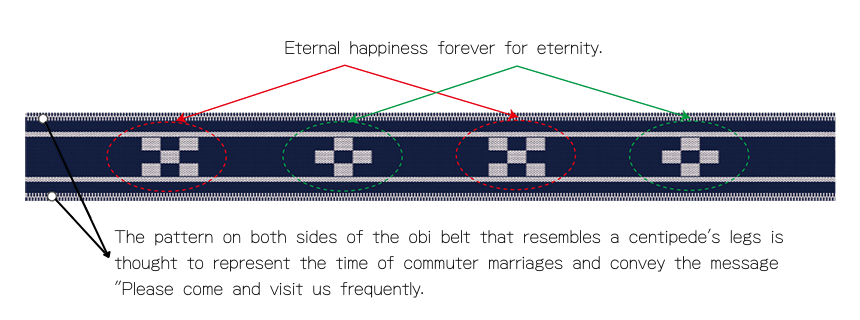History of Yaeyama Minsah
Yaeyama Minsah is a fabric made of cotton with a plain weave, produced in Taketomi Town and Ishigaki City. It is characterized by five-and-four square Kasuri patterns arranged alternatively, imbued with the hopes it lasts “forever for eternity.”
It originally comes from the indigo-colored Minsah obi belt, which a woman would give to the man that she loved. This belt was said to be the origin of Yaeyama Minsah which existed in Taketomi Island until recently.
The origins of Minsah weaving are not clearly documented. According to records from the 15th century, Korean people who were shipwrecked and drifted ashore on Yonaguni Island reported that cotton materials did not exist there at the time.
Documented records indicate that cotton was introduced to the Yaeyama region in 1642, which is approximately 400 years ago.
The islands extend outward from Kagoshima’s southernmost point into Taiwan, the Philippines, and the Indonesian archipelago. The history of the Kingdom of Ryukyu is known as the Great Trading Age, which lasted from the 14th to the middle of the 16th century and was based on relations with many countries.
During the Great Age of Trade from the 14th to the mid-16th century in the Ryukyu Kingdom, a wide variety of goods were brought to the Ryukyu Islands from many countries, including Japan, Korea, China, and Southeast Asia.
Okinawan textile arts incorporated techniques, materials, colors, and designs from Japan, China, Korea, and southern countries, and while influenced by these cultures, they developed a unique style that reflected the natural environment and aesthetic sensibilities of the Okinawan people. Among the many traditional crafts, it is in the field of textile arts that these influences are most clearly seen.
The main products can be roughly divided into obi belts and processed products. In addition, a wide range of clothing and interior decor products perfect for modern life are also manufactured.
Characteristics of Yaeyama Minsah
Minsah-ori characterized by five-and-four square Kasuri patterns arranged alternatively is meant to convey the meaning of “forever for eternity.”


